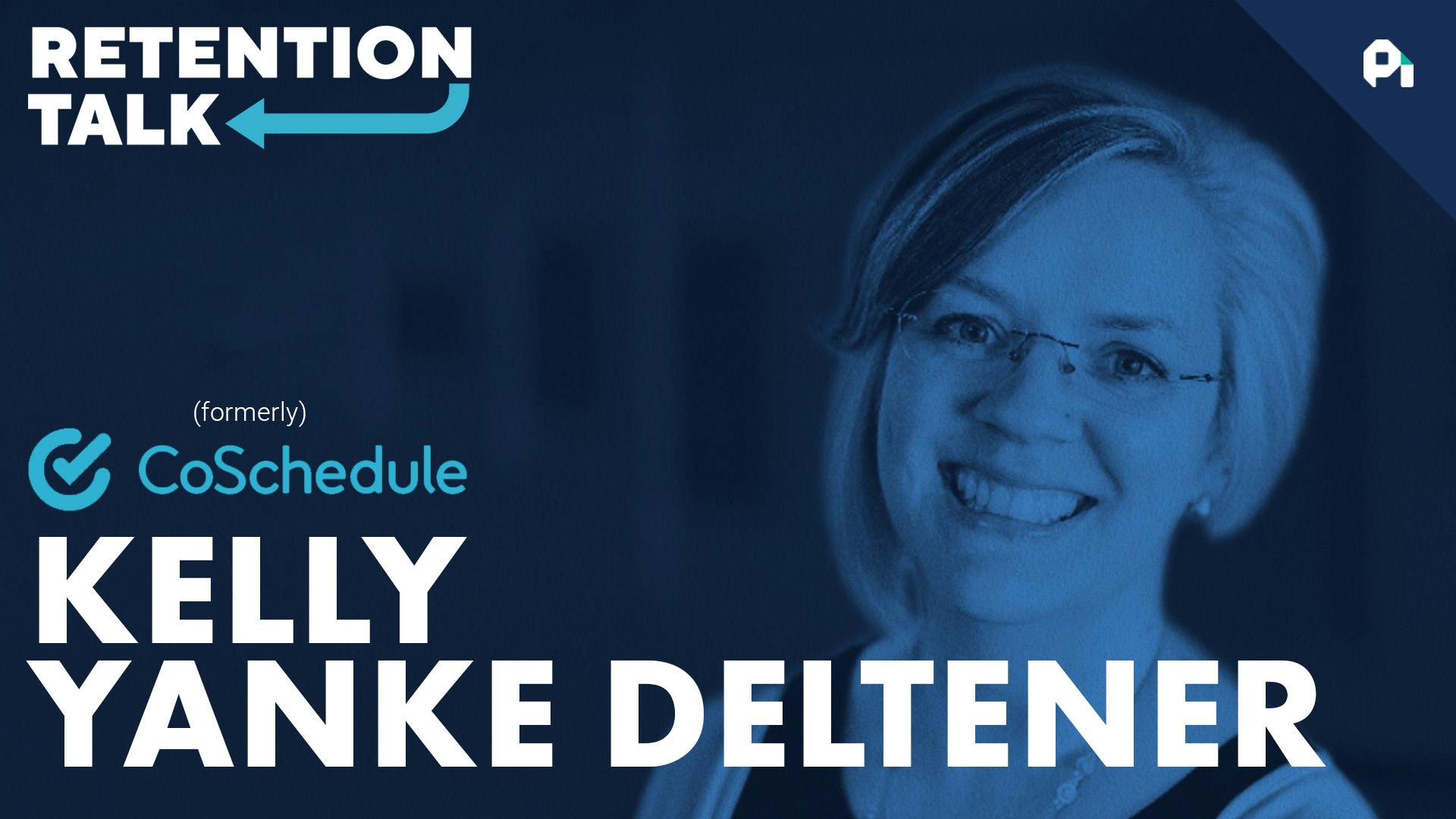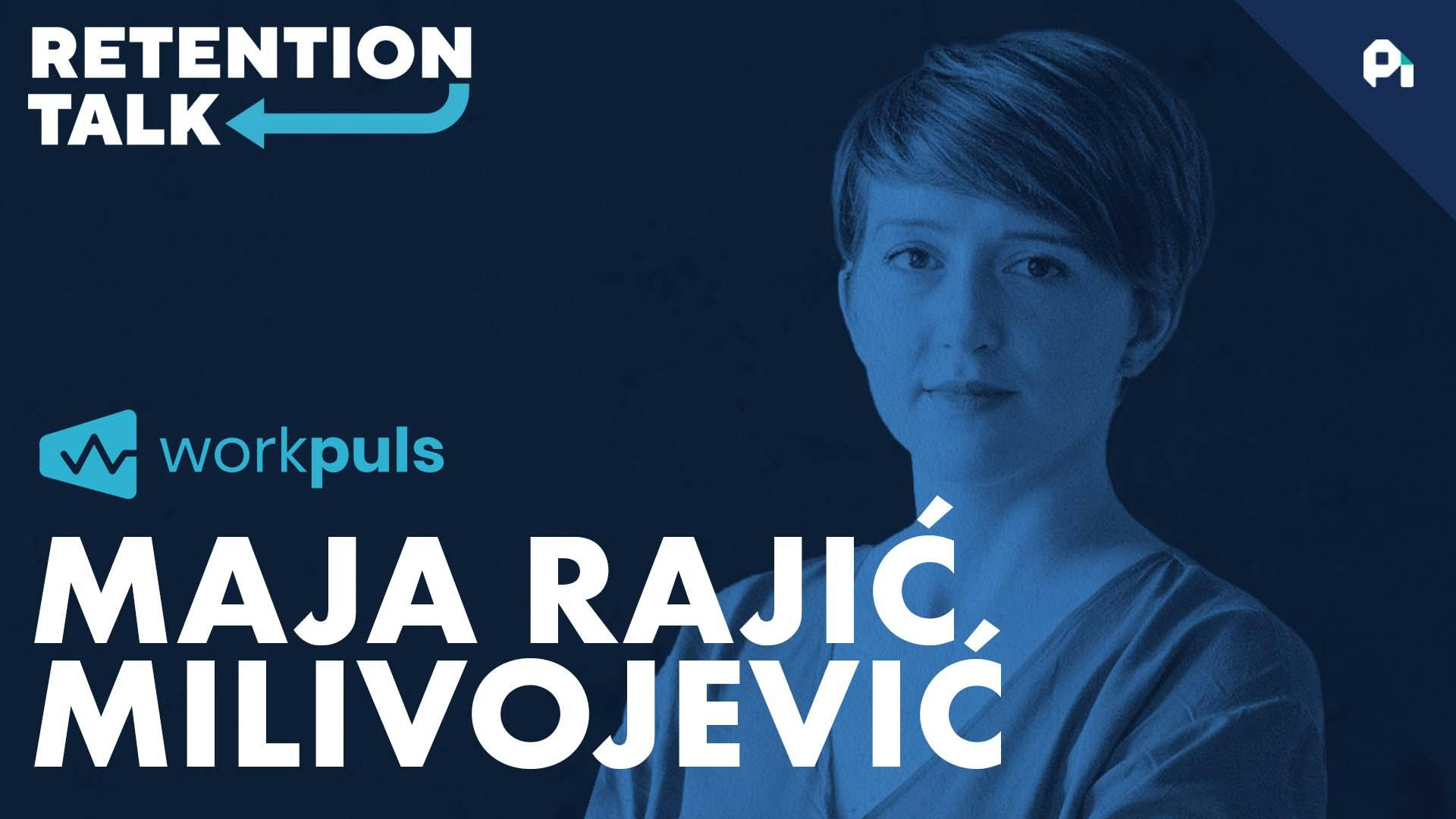
How to leverage cancellations | Who Gives A Crap's Jenna Tanenbaum
This episode might reference ProfitWell and ProfitWell Recur, which following the acquisition by Paddle is now Paddle Studios. Some information may be out of date.
Please message us at studios@paddle.com if you have any questions or comments!
A customer cancelling isn't the end of the world. What feels like a breakup should really be treated as a temporary break. If customers leave your brand with a bad taste in their mouth, they likely won't consider you as an option again. Which is why a smooth cancellation process is crucial.
On today's episode of Retention Talk, I speak with Jenna Tanenbaum, Head of Growth Marketing at Who Gives A Crap. We talk about using social proof to see what customers are saying about your brand, implementing exit surveys to figure out reasons for churn, and communicating early and often.
Key points discussed in the episode
We really try to treat a cancellation like a break and not a break up.” - Jenna Tanenbaum
Using social proof to see what customers are saying about your brand
Search your company name, a hashtag, or other key phrases on Twitter to see what folks are saying about you. Automation and outsourcing is your friend here, if the operation becomes too time intensive. Otherwise set up a time periodically to review any social proof that is out there.
Implementing exit surveys to figure out reasons for churn
There are all sorts of reasons folks will stop using your product. Adding a little bit of friction to the cancellation process can have a big impact on unlocking retention solutions. In the case of Jenna and Who Gives a Crap, some folks may just be re-engaging in a non-subscription manner.
Communicate early and often
The team at Who Gives a Crap makes sure to stay on top of their delinquent churn with dunning emails. When they noticed a high churn rate in Australia, they did some digging and found out that the hyperlink to update payment systems wasn’t working. Fortunately they caught it early due to consistent tracking and checking in with their metrics.
Take Action:
When customers cancel, it doesn't necessarily mean they're lost forever. In fact, cancellations make for great opportunities to win those customers back. Think about the pros of dealing with cancelled customers:
- They signed up in the first place
- They have experience with your product and a ton of knowledge about it
- The product may still be an habitual part of their workflow.
Of course there's a reason they're looking to leave, so the clock's ticking on your opportunity to convert them back to MRR. Once you identify why a customer stopped using your product or service, you can begin mapping out a strategic plan to woo them back. But first, you want to make sure you're winning back the right customers.
The following three factors are proven tactics to help you win back the right customers.
1. Segment customers by reason for churning
Churn analysis helps you uncover clues and reasons why customers stop using your product or service and spot the trend to improve your retention rate. Unfortunately, it's easy for trends from some customers to get masked in the overall analysis as your user base grows.
To avoid this, segment customers with similar characteristics and analyze why those groups churn to prevent similar customers from leaving. Additionally, once you know why customers stop using your products, it's easy to take steps to address the issues before re-engaging and winning them back.
2. Implement customer feedback in product development
Customer feedback is a valuable and vast resource that ensures product innovation aligns with customers' present and future needs. In addition, customer data offers you a complete analysis of your product or service and helps you learn about its strength and weaknesses.
Listening to your customers helps you understand their expectations, and the reasons they stopped using your product or service, so you can improve. It also saves you time and resources otherwise spent on unsatisfactory features or products.
3. Use customer behavior data to design your win-back strategy
Customer behavior data refers to information you produce from commercial behavior using different devices and collection methods such as online tracking, surveys, interviews, focus groups, monitoring social media, and subscription data. It provides insight into how your customers are interacting with your product or service.
Analyzing your customer behavior data helps you understand how and what variables are influencing your audience, so you can identify behavior patterns to design a solid retention and/or win-back strategy.
You could also use an RFM (recency, frequency, monetary) analysis to highlight customer behavior segments and help you determine appropriate win-back strategies to implement by identifying your best customers and those who contribute to your churn rate.
Do us a favor?
Part of the way we measure success is by seeing if our content is shareable. If you got value from this episode and write up, we'd appreciate a share on Twitter or LinkedIn.
We really try to treat a cancelation like a break and not a break up, because just if you think about how you interface with your own subscriptions, people hop on and hop off consumer goods subscriptions all the time, and I really want to make sure that our customers are having just as good ever of an experience signing
up for a product for the first time as they are taking a break from the product. Because if they leave, having a bad taste in their mouth about who gives a crap, they're never going to think about us as an option again.
Welcome to retention talk. I'm Neil Dhesi and we're talking to the best minds in the world of product and customer success to bring you actionable strategies on reducing churn and boosting retention. This week, we're talking to Jenna Tenenbaum, head of growth marketing at Who Gives a Crap.
In this episode, we talk about using social proof to see what customers are saying about your brand, implementing exit surveys to figure out exactly why folks are turning. And lastly, pay close attention to what Jenna has to say about just how crucial communication is that boosting retention?
Jana, thank you so much for being here with us, our retention talk today. Super excited to have you on the show. I'd love for you to just kick us off with who you are and how did you end up and who gives a crap?
Yeah. Well, thanks for having me, Neal. I'm really excited to be here too, and hopefully I can share some ideas with your audience around retention. My name's Jenna Tannenbaum. I'm a growth marketer, and I've spent my entire career nearly growing e-commerce direct to consumer food tech and subscription businesses.
I started out in the tech space with a SAS company called Chartbeat. I was the first marketing hire at ClassPass. I then started my own food subscription company called Green Blender, and now I am trying to change the world at who gives a crap.
And for those of you who are not familiar with who gives a crap, we sell good looking, environmentally friendly toilet paper, paper towels and tissues, and we donate 50% of our profits to build toilets to those in need.
That's really the mission of the business, and to date, we've donated nearly $5.8 million to help fund sanitation projects in developing world. So we're really excited and really passionate about mission driven businesses and of course, subscription. That's awesome. And that's I didn't know that.
That's incredible impact and not that long of a time right in a space that is perhaps being disrupted after a long time. So that's really cool to see. Tell me more, Jenna. Obviously, you know, you've thought about the subscription model a lot, given that it's pretty, pretty quarter to your business model.
How does who gives a crap think about retention and specifically like, you know, you being on the marketing team, what's your Northstar when it comes to retaining your customers? Well, our general marketing Northstar is to deliver and delight.
And we really think about that and making it really easy to order toilet paper that is the main product that we sell. But to do it in a way that is human, that is entertaining, that makes you have a smile on your face.
So if we are talking to you when maybe you're not ready to top up again or buy another pack of toilet paper, at least your attention time is spent in an entertaining way. We don't take that lightly. We really think about how we communicate with our customers, and we really center this around delivering delight and that humans
made it. Humans are behind the company. I think sometimes companies kind of that gets lost in the marketing glam. I love that. So it sounds like an obsession around, you know, user experience, even in the most mundane of things, I think has particularly helped you guys carve out a new share to your point, right?
And there's going to be instances where customers cancel or pause their subscription like, tell me more about what that what that looks like on a tactical level, if and when that time comes like, yeah, just what does that look like and what do you guys do to perhaps get ahead of that or ultimately save those customers?
Right? So we kind of touched a little bit before around how do we save customers from turning? And I definitely want to get into some tactical ways that we've done that. But the first thing that we do, first and foremost is really making sure that we have a strong product that actually answers or fulfills a problem with
our customer. And so your listenership is probably ranging from small startups to larger companies. And since I've worked in both of those phases, I think in order to get your product right, there's a couple of things that you can do when you're a small company, it's talk to your customers regularly when you're in the startup phase.
I think the one thing that's super exciting in that phase is that you're lucky enough to talk to every single one of your customers. You can actually call every single one at one point when you get larger, you really can't do that.
But even large companies should make it a point to talk to a few customers every month. I personally love looking through the WHO gives a crap hashtag, just reading what people are writing about our brand. I click into their profiles.
I look at pictures that they've posted a year ago just to get a sense of who our customer base is, and I really want to make sure that I don't lose sight of the customers. It's just a build off of that has there is something that you guys have really, you know, taken to heart when it comes
to customer feedback and implemented in the product based on those conversations? Oh, all the time. I think the biggest thing is that we are an eco friendly company. We create recycled toilet paper and bamboo toilet paper. And I think one of the things that we have really created a strong mission around is constantly looking for ways to
reduce our carbon footprint and communicate that to our customer base. So I have to tell you the amount of meetings I've spent talking about how to eliminate plastic tape on our packaging or in our ship. Boxes. We've done lots of research around things that you wouldn't even see as a consumer when you're having new pallets in a
warehouse, they're typically wrapped in plastic. And we've done a lot of research to start replacing that practice with big rubber bands that can be reused so that we can constantly reduce our footprint and we really take it to heart and that our customers are relying on us to continue to do that kind of work so that when
we do say that, we are working on a more sustainable way to buy your toilet paper and have toilet paper, we really mean it. And that's definitely not something that you just sit and wait. You check a box and you're constantly improving that.
Now that that makes a ton of sense, and I'm sure it's like some of these things, you probably don't even think about it, but your customers are going to be the ones to like, call it out, right? And I think if you can cause a loop in and see that like you care about what they have to
say, I think that's probably best for the long run. Definitely. You know, I was scrolling through Twitter as one does, and I saw Amanda Natividad. She's the head of content at Chip Bob, and she actually wrote a tweet that I love and she was talking about actually creating a customer advisory board for you so that you have
a handful of customers, maybe from different segments of your audience, that you can regularly rely on to bounce ideas off of. Do sneak peeks of product launches ask if even copy is clear enough? And I think that's really an interesting way to keep your customer really close to your product makes total sense.
We've we've experimented with pieces of that in the past, and I think it's even in the ones where we've done the most research like hearing from customers first hand, like totally changes your perspective on things. So of course, Tennyson's.
I mean, we're in our business like you at profit. Well, you're just thinking about profit. Well, all the time and and I'm thinking about toilet paper and the company all the time and looking at hundreds of emails on a regular basis.
And it's really important to remind yourself that not everyone is thinking about subscription or thinking about toilet paper 8:10 hours a day. So making sure that your copy is really clear and hits home and you're really actually solving problems that are problems in the eyes of your customer?
Yeah, no, that makes that makes total sense. Building off of that, given that you guys have such a laser focus on like delivering a really, really good experience, what's something that you guys maybe struggled with when it comes to retention that that, you know, you guys tackled head on and ultimately overcame?
So one thing that it feels controversial to say from a subscription perspective, from a customer perspective, it's like the most straightforward thing is that we really try to make counseling as easy as possible. And I I know it's crazy to think, but like I said in the beginning of the show, we really don't see cancelation as a
breakup. We see it as a break specifically with toilet paper. It's not that you are not going to use toilet paper again if you cancel your subscription and who gives a crap. And we also make it really easy for ways that you can reengage with the brand after this cancelation.
This break up of your cancelation, whether you're ordering on our eCommerce store or you're just taking a break because maybe we didn't get the frequency correct for you and we just need to use up all of the toilet paper that you just bought.
But we really try to treat a cancelation like a break and not a breakup. Because just if you think about how you interface with your own subscriptions, people hop on and hop off consumer goods subscriptions all the time.
And I really want to make sure that our customers are having just as good of an experience signing up for a product for the first time as they are taking a break from the product. Because if they leave, having a bad taste in their mouth about who gives a crap, they're never going to think about us as
an option again. And it's really important to me that we again humans run the business, humans run this company, that we treat everyone like a human because I know everyone has had a situation where they've been trying to cancel a subscription.
And it's like you have to jump through hoops, call a one 800 number, wait online for five minutes before you can actually make the cancelation. So that's really important to us. Now, I love that, and honestly, I think it's such like a mindset shift because I feel like the industry, at least when it came to like product
and marketing professionals like we went through a phase of optimizing everything. And so we, as in the industry, made, I think, canceling difficult to sort of like optimize that match. Hurricane, and I think to your point, like especially when when you shift that mindset from a breakup to a break, you know, they're going to continue using it
down the road, right? Their relationship with the customer doesn't necessarily end about-face. I think I philosophically completely agree. How do you reconcile that with trying to learn why someone might be canceling? I think that's what I sometimes struggle with.
And so like, I've seen products where like, they give me a survey or they call me or nothing, right? So so like, tell me more about how you think about, you know, in that moment making it easy, but also trying to learn something from from that customer perhaps leading you?
Yeah. So we, of course, have an exit survey and I say, of course. But if you don't have an exit survey, I strongly recommend implementing one because I think a lot of things. It's really interesting to see the different types of reasons why people cancel.
I think there's a few churn reasons that don't keep me up at night, and that's things like I'm just taking a break or I have too much toilet paper. Those are all frequencies or I don't like subscription in general.
I want to order on the e-commerce side of things. Those kinds of reasons why people are quote unquote, breaking up with us in the subscription and turning off. It's really like they just don't like the mechanism of subscription, but they're not actually turning from the business.
They're just reengaging with us in a different way. Things like failed credit card payments. That's more of a passive churn. And I wouldn't also bucket that into a problematic churn as an issue, but it can be solved, and it's not showing an underlying issue with your product.
In the last bucket is that I don't like the products, my partner doesn't like the product, and that's what I would deem a true churn where someone is probably not going to come back to the product at all.
So we look at those numbers every month to see if things are spiking or not spiking, or if it's kind of staying level. And then we every quarter look and see what we can tackle. What are some bigger problems that we need to address and what are some things that might be small tweaks like failed credit card
payments, for example? Got it. No, that that is super helpful to think about, like how you segment that because I think for your product, too, what's interesting is it's the adoption of a subscription is perhaps new for customers, right?
Like toilet paper historically hasn't been something that a lot of folks buy on subscription. And so even just a behavior changes like psychology around that perhaps is different. And in the last one, yeah, they just have too much of the product.
I think that makes sense. I have to ask on the second piece around the field credit card payments like, what do you guys do there? Just because it's a personal interest of mine? Everyone handles a little differently. So what's the process look like for making sure people can continue, you know, getting product if that happens?
We really try to make it very easy for people to update their credit card information, and this kind of goes into the whole shipping experience. first of all, the one thing that customers hate most is when they get a surprise package of 48 rolls of toilet paper, when they already have maybe 48 rolls of toilet paper at
their house. And so what we try to do is we communicate early and often so that the experience is as optimal as possible. So let's say we're seeing a failed credit card payment. We will alert the customer early as possible so that they can make that update and make that experience as seamless as possible.
So who gives a crap? Actually operates in several countries where we launched in Australia in 2013. So we are present in Australia, in the US, in Canada, in the UK and in Europe. And so one of the things that we get to be able to see is what's the churn rate across countries?
What's the reason why people are turning across countries and we are actually seeing a higher churn rate because of failed credit card payments in Australia, incidentally? And we like what's going on like something is very specific to that country and maybe it's the customer behavior or something like that, and we made it a point to dig into
that a little bit deeper. And what we found was that one of our emails didn't actually have a hyperlink. It was just like a hyperlink to their updated payments system. And so we were seeing a lot more delinquent churn because of that.
And I think that just highlights how important user experience is and how important it is as a lifecycle marketer or someone in CRM to really look at that flow with fresh eyes on an ongoing basis. And then the other thing that's really important to make sure that you are tracking these reasons for churn on a regular basis
and you're looking at them on a regular basis, you're not going to have zero churn, you know, and so it's important to understand if you have something that's systemic, maybe that is something that's showing something underlying to the product and customer relationship.
Or if something feels like an anomaly like this elevated credit card payment in Australia, it could have been something else we were thinking, you know, a lot of different examples of maybe, you know, our our. Human connection was not working as well as it showed in other countries.
Maybe I don't even know we were just kind of brainstorming ways, and at the end of the day, we were lucky that it was something a pretty simple fix. But nonetheless, it's important. If you don't track that kind of information on a regular basis, you may be not only seeing higher churn than you would have otherwise, but
you're also creating bad user experience. Again, that comes back to our marketing. North Star of Deliver and Delight Delight can be fun and exciting and unexpected and lots of jokes. And I mean, we have so many puns. I mean, we are a toilet paper company that's called Who gives a crap.
So we have we have a lot of fun. But I think also delight can mean making sure it's really easy to do the things that you want to do on the site and and with the product and company.
Awesome. No, I love how data-driven you guys are, even just that right? Having that segmentation capabilities and being disciplined around like iterating on an experience until the metric improves is, I think, super important to runners out. You know, as you think back like, what is something you're really proud of having built that?
Who gives a crap just could be anything. Doesn't have to be about retention, but it sounds like you guys are really crushing. It at least have a lot of the fundamentals down. Yeah. What are you? What are you proud of?
Oh my gosh, I'm proud of so much of this company, really. Again, I talk a lot about, you know, humans run this company and the amount of pride that everybody has being able to work for a profit for purpose company that we've donated over $5.8 million to date to charity.
We are big, hairy, audacious, be had is to make sure that everybody has access to a toilet by 2050. And I think what I'm most proud of is the people that run who gives a crap and the people that work out, who gives a crap and how genuine everybody is.
It's really a pleasure to work every day with them and tackle big goals because even when something's not working or, you know, we're trying to hit really ambitious goals, everyone just is really just pleasure to work with, and it's something that should be a given in your job.
But unfortunately, it's not. And who gives a crap really nails it. Love it. Well, thanks, Jen. I really, really appreciate the time. How do people find you or who gives a crap if they're interested in learning more? Yeah, you can find who gives a crap at who gives a crap.
Dot org. And you can find me on LinkedIn. I'm Jenna Tannenbaum. Awesome. Well, thanks, John. I really, really appreciate the time, and thanks for being here. Thank you so much. A huge thank you to Jennifer lending their time to the podcast with their help.
We've leveled up our retention skills to recap. We talked about using social media to see what customers are saying about your brand, search your company name, a hashtag or other key phrases on Twitter to see what folks are saying about you.
Automation and outsourcing is your friend here. If the operation becomes too time intensive, otherwise set up a time periodically to review any social proof that might be out there. second, implementing exit surveys to figure out why folks are turning.
There are all sorts of reasons why folks will stop using a product. Adding a little bit of friction to the cancelation process can have a big impact on unlocking retention solutions. In the case of Jenna and who gives a crap.
Some folks may just be reengaging in a non subscription manner. And lastly, communicate early and often the team who gives a crap make sure to stay on top of the delink would churn with Dunning emails when they noticed a high churn rate in Australia.
They did some digging and found out that the hyperlink to update payment systems weren't working. Fortunately, they caught it early to consistent tracking and checking in on their metrics. Thanks for listening to this week's episode of Retention Talk.
Don't forget to subscribe at retention, talk Gqom, and if you want to help spread the word, tag me on Twitter and the other side. 23. Unless Dish on today's episode, please give us a five star review on the podcast platform of your choice and let your friends know as well.
And if you know a great guest, send me a message at new a proper welcome. This has been a proper will record production the largest, fastest growing media network dedicated to the world of subscriptions.
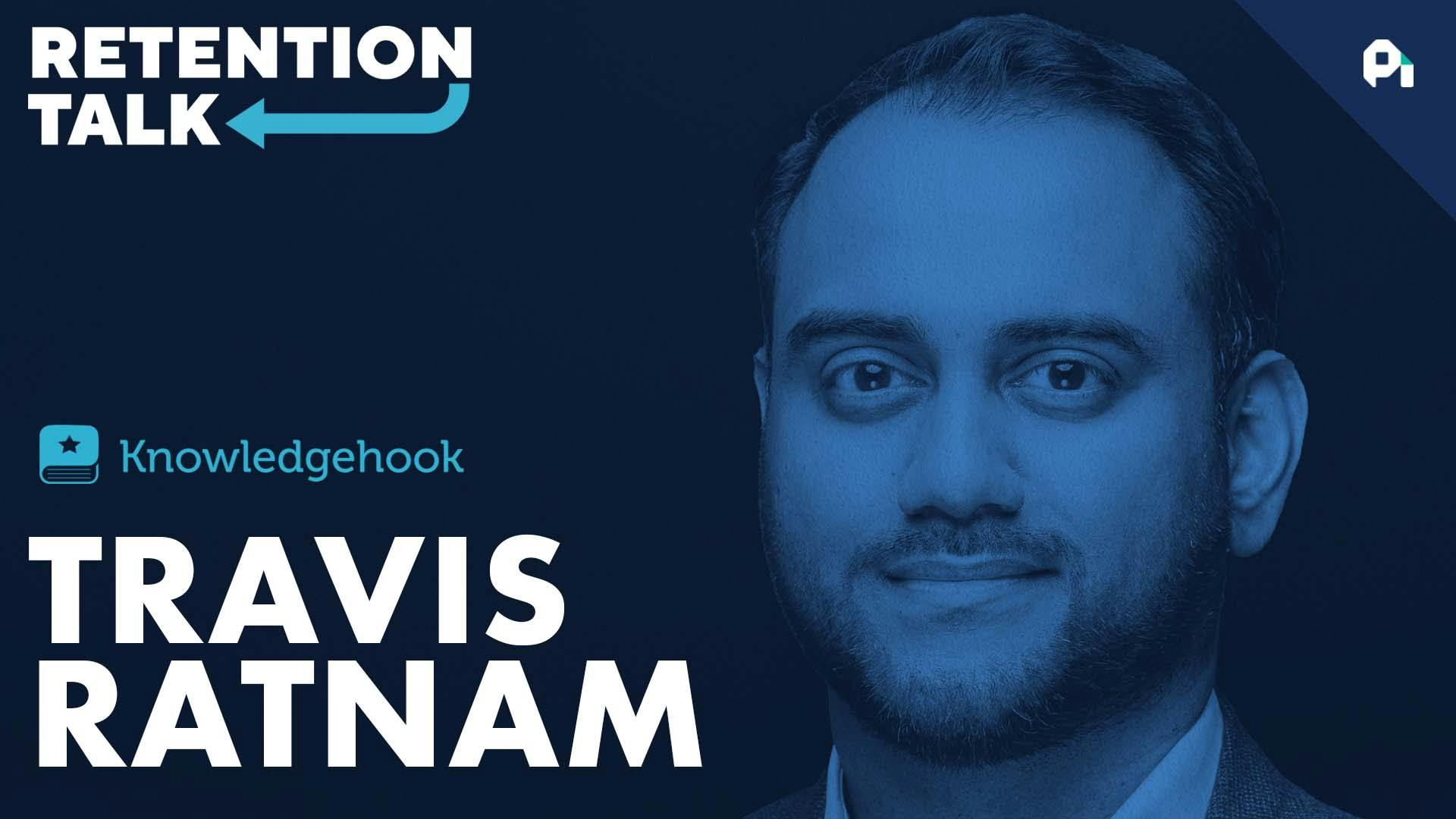
Onboarding, customer cohorts, and non-traditional CS | Knowledgehook's Travis Ratnam
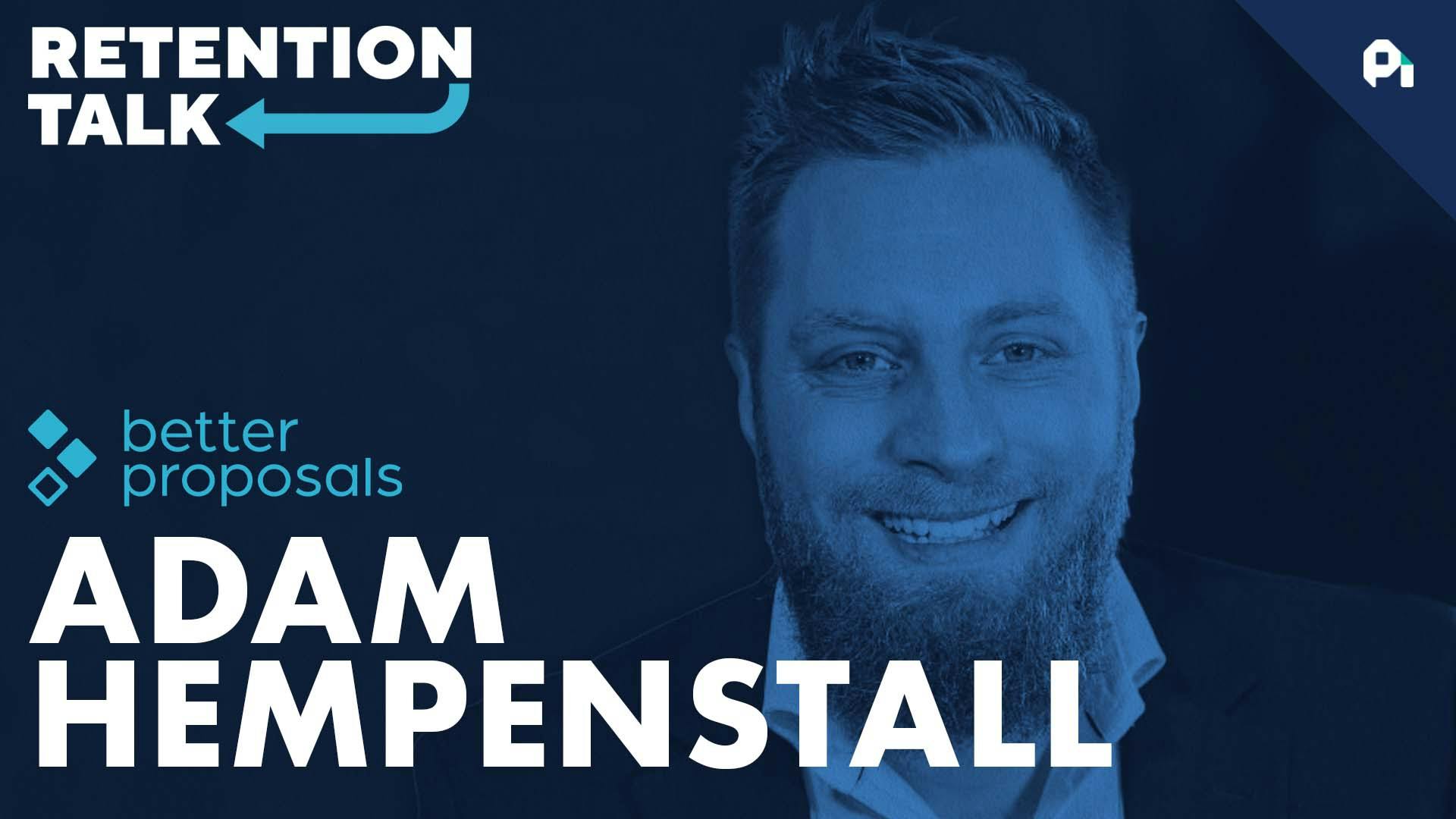
Overthinking, hacking retention, and rallying around metrics | Better Proposals' Adam Hempenstall
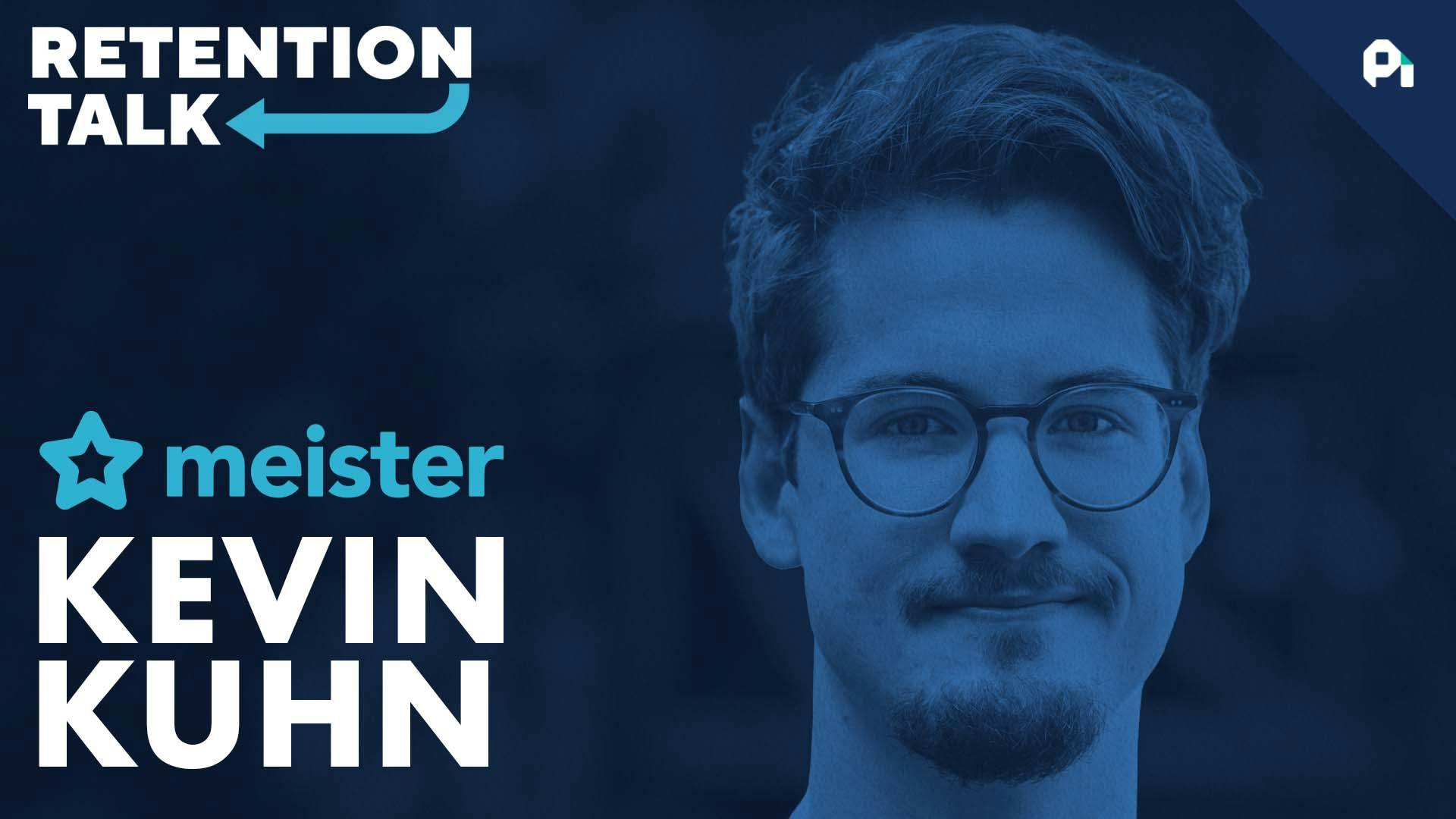
Retaining through activations | Meister's Kevin Kuhn
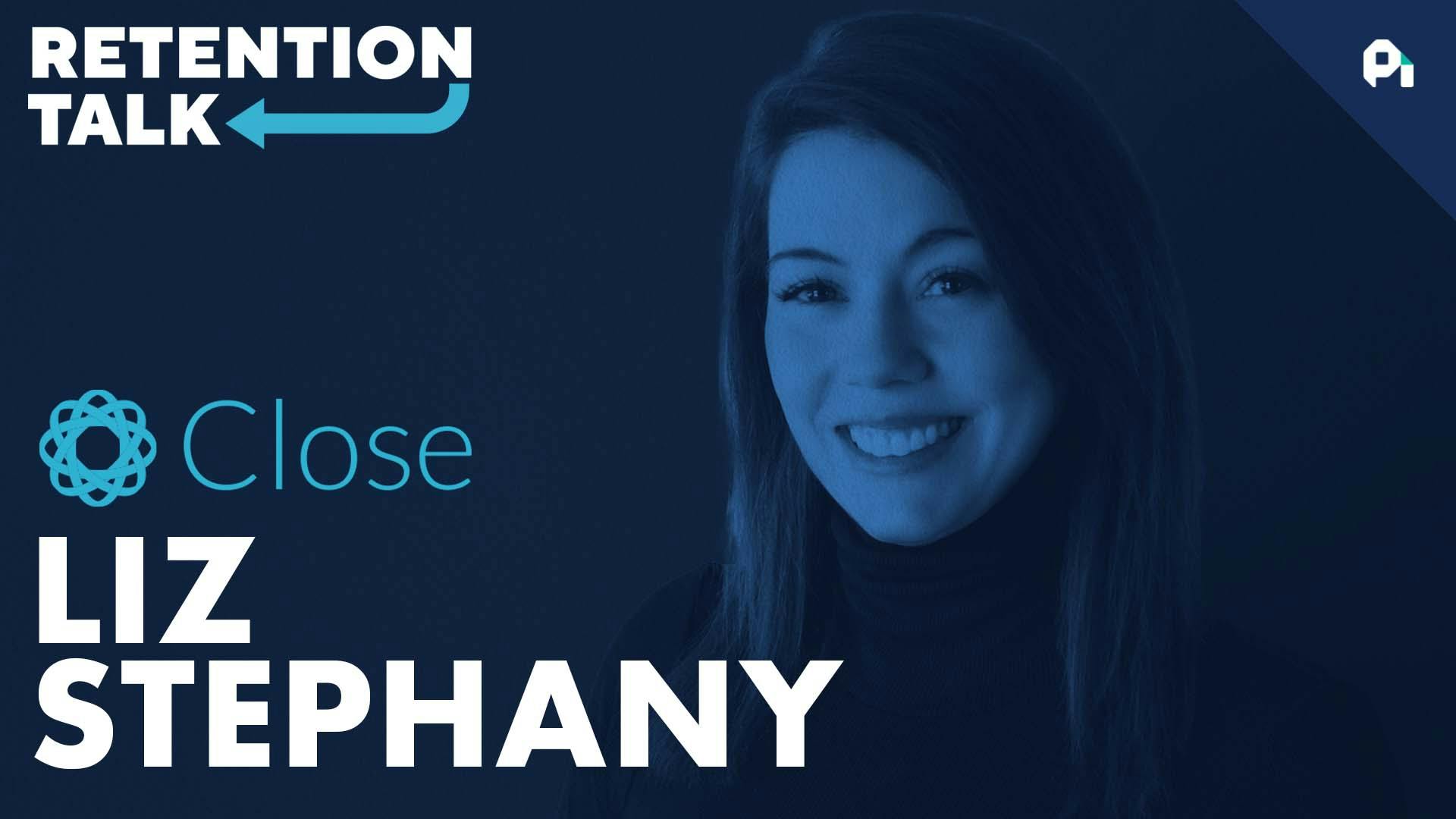
Two ways to segment churn | Close's Liz Stephany
